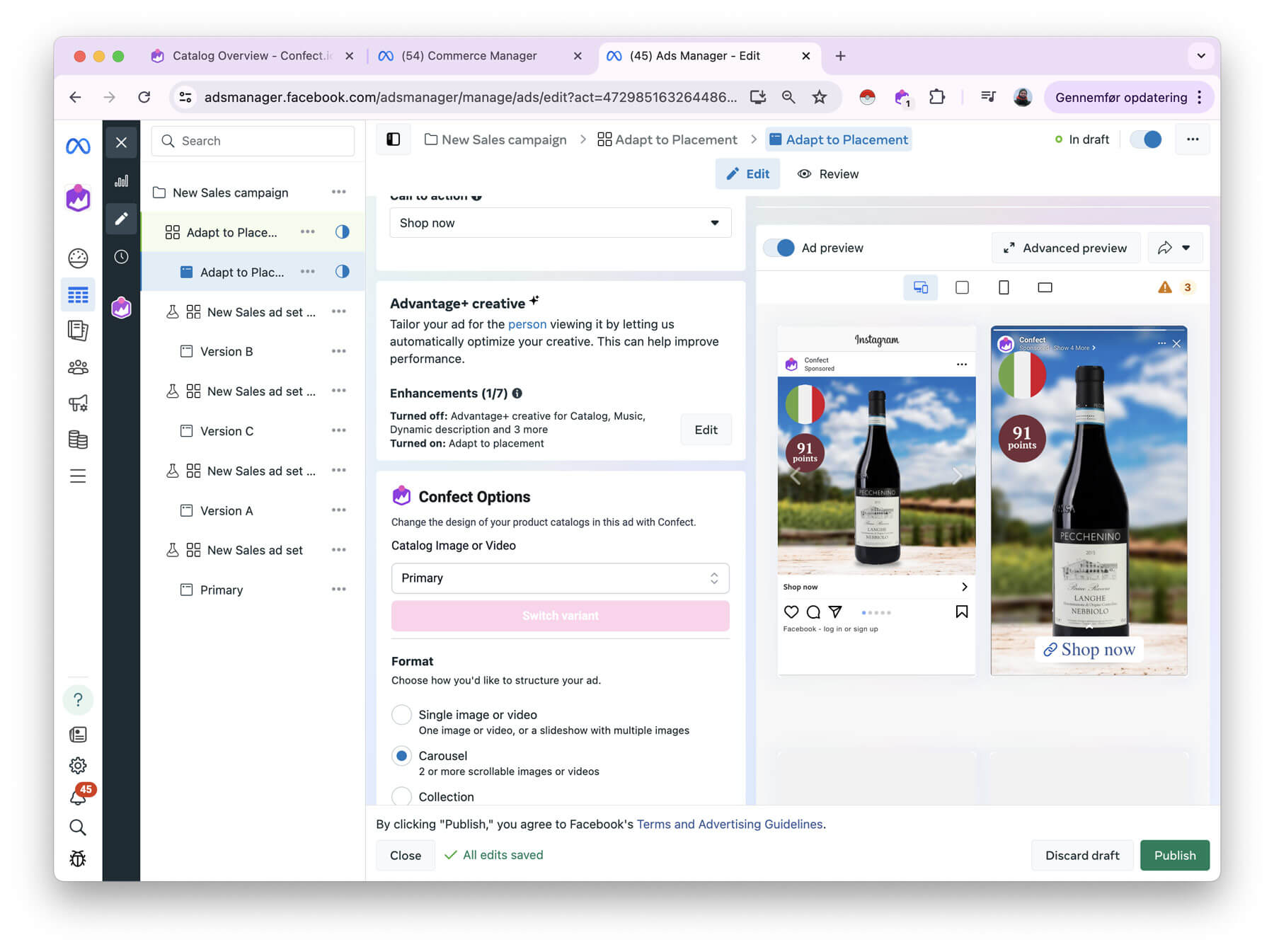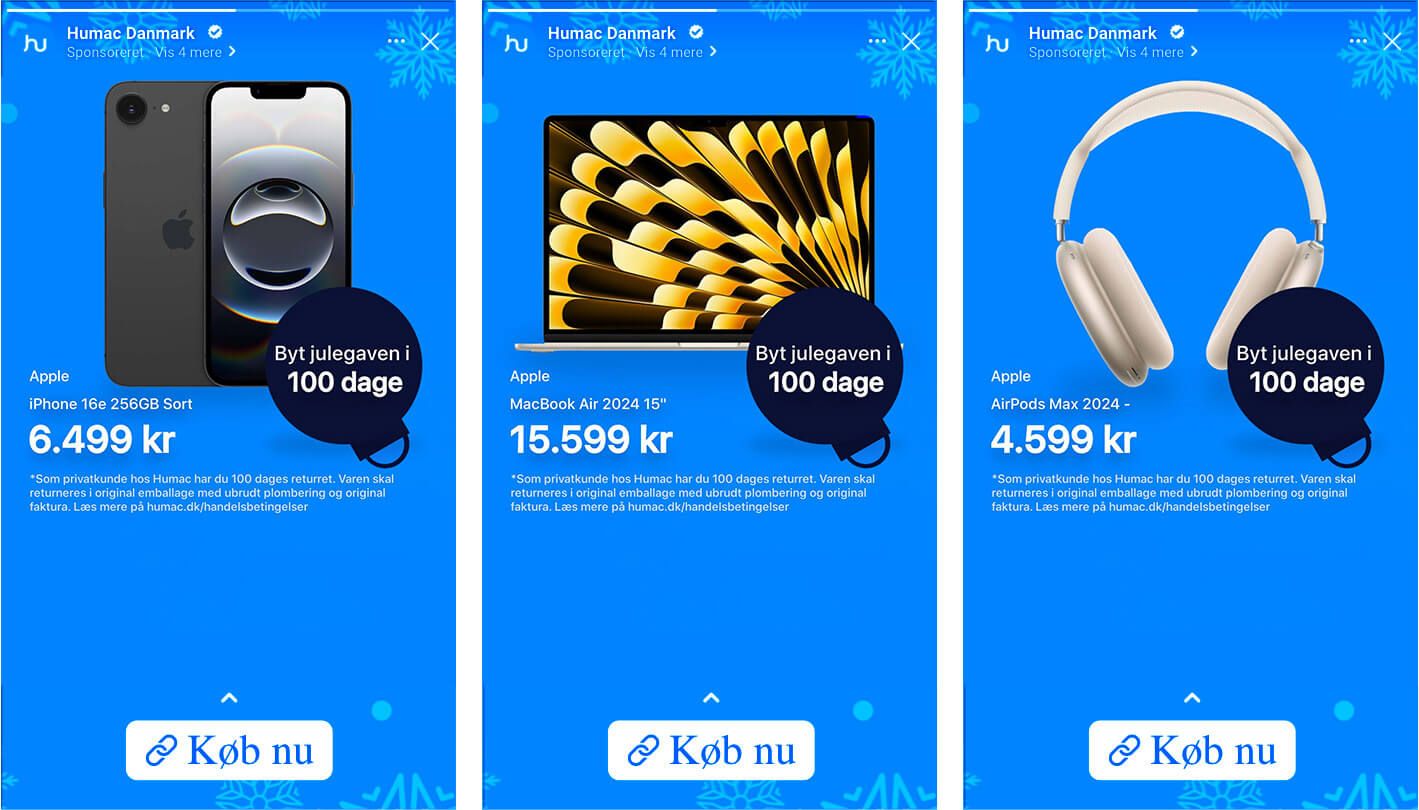Adapt to Placement
June 6, 2025
Meta’s Adapt to Placement works by providing product images in different resolutions and aspect ratios, so they fit all the various placements across Facebook, Instagram, and other Meta platforms.
Meta supports a variety of ad placements, such as Feed, Stories, Reels, Explore, Marketplace, etc.. Each one has different dimensions, behaviors, and user expectations. Yet most advertisers still serve the exact same catalog ad across all of them.
That’s like trying to use the same design for a billboard,, a TikTok video, subway ad, and an Instagram Story; It doesn’t work!
Your product might be great. Your audience might be right. But your creative has to adapt to where it’s being shown. Otherwise, you're leaving performance on the table.
What Does Adapt to Placement Mean?
Adapting to placement means designing your catalog ads specifically for the format, context, and behavior of each platform or placement. Rather than using one generic design in every slot, you create tailored versions that make the most of the space, dimensions, and user experience in each.
For example:
A vertical Story ad should use full-screen video and minimal text.
A square Feed ad should have tighter design with CTA buttons.
A Reel ad should feel more like user-generated content.
A right-column ad on desktop can include more product detail.
It’s not about making your ads “look cool”; it’s about aligning them with user behavior. Because an ad that feels native to the platform is more likely to stop the scroll, capture attention, and convert.

Why It Matters
Meta’s catalog ads are powerful because they’re dynamic and personalized. But dynamic content only performs when paired with the right creative for the context.
If you use the same layout everywhere, you’re often:
Cutting off text or product images in Stories and Reels
Wasting screen space in Feed or desktop
Showing a horizontal layout in a vertical placement
Making users work harder to understand what they’re seeing
This leads to:
Lower click-through rates
Higher cost per result
Weaker engagement
Missed conversions
You might not even realize it’s happening because your results aren’t bad; they’re just underperforming compared to what’s possible when you actually adapt for placement.

What Does Adapt to Placement Look Like in Practice?
Here’s how to think about adapting catalog ads to various Meta placements:
1. Instagram & Facebook Feed (1:1) Adapt to Placement
Size: Square (1:1)
User behavior: Scrolling quickly, but open to shopping
Best practices:
Use prominent CTAs (Add to Cart, Shop Now)
Include branding elements like logos and colors
Focus on clean product presentation
Keep text readable—avoid long descriptions
2. Stories & Reels (9:16) with Adapt to Placement
Size: Vertical full-screen
User behavior: Fast-paced, full-immersion, swipe-heavy
Best practices:
Go full-screen—no black bars or center-only layouts
Add subtle animation or motion to grab attention
Minimize clutter—highlight product + price or key message
Use platform-native text placement (top/bottom thirds)
Stories and Reels are especially unforgiving if you don’t adapt your layout. Centered square designs with black padding look lazy and non-native. Viewers skip right past them.

3. Right Column & Desktop Placements
Size: Often smaller or off to the side
User behavior: Passive viewing, more time per scroll
Best practices:
Include more detailed product information
Use less motion. Clarity beats flash here
Consider including ratings or product highlights
4. Explore, Marketplace, In-Stream Video
These hybrid placements are growing. What works best here depends on your core format, but generally:
Simplify your designs
Lean into strong visuals + product titles
Avoid overcomplicating your template
How to Create Placement-Specific Catalog Ads
The good news is: you don’t need to create separate campaigns for each placement or design thousands of assets manually.
With tools like Confect, you can:
Create multiple design variants per product feed
Assign different designs to specific placements (e.g., vertical vs. square)
Export everything in a single, smart video or image feed
Let Meta deliver the right version in the right placement, automatically
This means you still get all the benefits of dynamic product ads, but with creative that’s placement-optimized.
You can even test different layouts, animations, or messaging by placement to learn what works best in each format.
Adapt to Placement Example: Stories vs. Feed
Imagine you’re promoting a new pair of sneakers. Here's how the ad might differ:
Placement Creative Elements
Feed (1:1) Square layout, product on left, text on right. CTA button at bottom. Logo in corner.
Story (9:16) Full-screen video with zoom effect. Price drops in with animation. Product title at top, CTA swipe-up at bottom. Minimal text.
Even though the product and goal are the same, the presentation is completely different. And the performance will be too.
.jpg)
The Impact of Placement Adaptation on Performance
Brands that adapt their creative to placement typically see:
Higher engagement: Especially in immersive placements like Stories and Reels
Lower CPCs: Because native-looking ads blend in and reduce friction
Improved ROAS: Matching user intent with platform behavior converts better
Better branding: Because you're showing up consistently and contextually
In fact, one Confect customer tested static vs. adapted video catalog ads across placements. The adapted version drove:
36% higher click-through rate
28% lower cost per result
A 2.1x increase in ROAS on Instagram Reels
That’s the power of making your product catalog fit where it's being shown.
Quick Tips for Placement-Adaptive Design
Use adaptive templates that automatically reformat content
Preview your ad in multiple placements before publishing
Test vertical-only campaigns (Stories/Reels) vs. mixed placement
Check your Meta analytics to see which placements are underperforming; those might be victims of poor design fit
Avoid over-complicating each variant. Start simple, optimize over time
Final Thoughts
Adapting your catalog ads to each placement isn’t a “nice to have”; it’s a must-have if you want to compete on Meta today. With so many ad formats, feed types, and content behaviors, treating every placement the same is no longer an option.
Fortunately, adapting doesn’t mean doing more work. With the right tools and mindset, you can design smarter, placement-ready assets that deliver better results across the board.
Start by analyzing your top-performing placements. Are you matching the design to the platform experience, or hoping a square peg fits in a vertical hole?
Because when your creative meets your customer where they are—literally and visually—you’re not just running ads. You’re converting.
Learn how Safe Zones help keep your key visuals and messages visible across all ad placements here.
Try Confect for Free
Confect can help you to create great-looking Catalog ads and Dynamic Product ads for Facebook, Instagram, TikTok, Snapchat and Pinterest.
